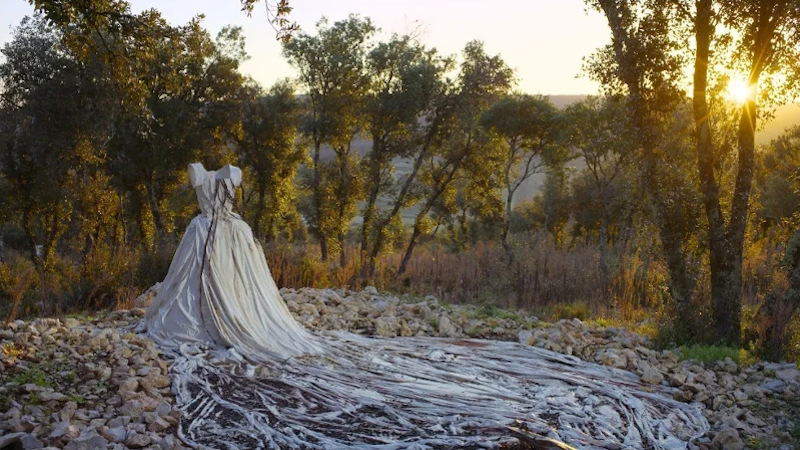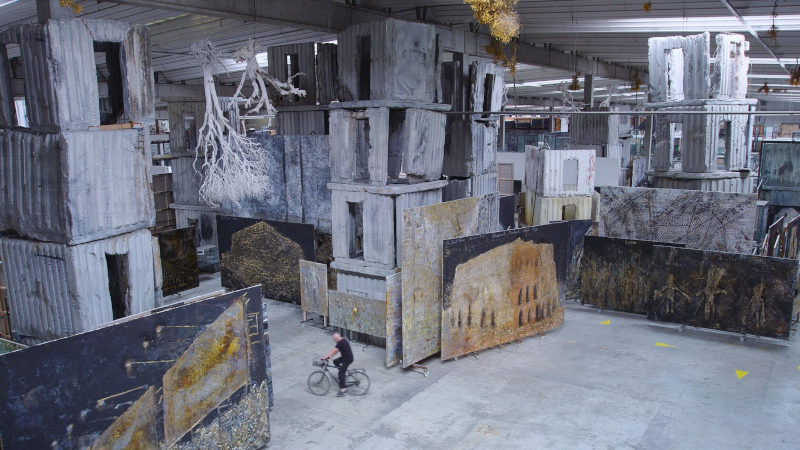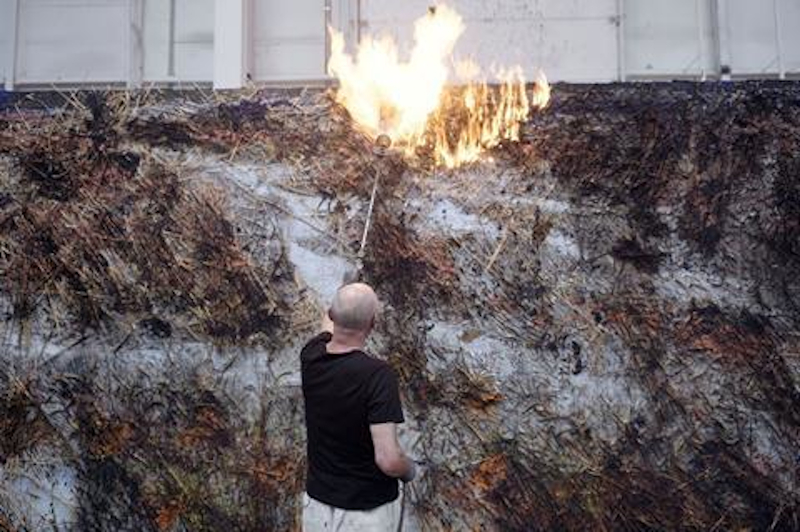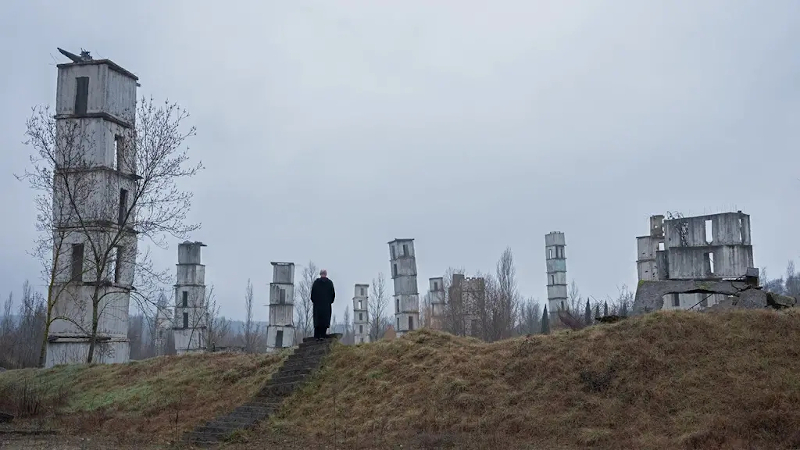Director – Wim Wenders – 2023 – Germany – Cert. PG – 93m
****
An exploration of the work of German artist Anselm Kiefer and the influences which lie behind it – 3D documentary plays the 2023 London Film Festival which runs from Wednesday, October 4th until Sunday, October 15th, and will be out in UK cinemas on Friday, December 8th
Wim Wenders seems to step effortlessly between narrative and documentary feature films, and you never feel that he considers one or the other more important. To him, they are all movies. As with his earlier Pina (2011), similarly about an artist – the choreographer Pina Bausch – this is another portrait of an artist shot in 3D. Wenders’ subject here, again eponymously designated by Christian name, is Anselm Kiefer, a practitioner of the plastic rather than the performing arts.
From the outset, it’s clear that the film needs to be seen in 3D. Wenders’ camera moves deliberately and formally around maquettes that resemble life-sized women wearing dresses, but without the women in them so that they stand as empty objects, often with strange constructions in the space where you would expect their neck and heads to be. The forest setting in which Wenders films them seems almost as significant as the maquettes themselves as we slowly pass by an upright tree trunk between the sculpture and us. To Wenders, the plastic quality of three-dimensional space is an issue for the camera and very much part of the documentarian’s subject matter.

Kiefer has worked in a series of his own specially constructed studios over the years – first in his native Germany and, more recently, in France. He makes art on a vast scale, which is to say that his paintings are enormous – typically ten feet by 30 feet, that sort of size, and for studios he tends to favour former factory buildings and decommissioned industrial estates and parks. Film buffs may find themselves thinking of the vast warehouse that closes Citizen Kane (Orson Welles, 1940) or the similar one inspired by it at the end of Raiders Of The Lost Ark (Steven Spielberg, 1981). Those are narrative films, though, whereas this is not; yet truth, as they say, is stranger than fiction.
In a vast warehouse space somewhere within the complex of his studio space, which seems to go on forever, Kiefer pushes his upright paintings around on trolleys, the arc described by their short journeys as fascinating to the camera as the paintings themselves. Wenders finds these types of visual scenarios completely compelling, and it’s impossible not to share his enthusiasm.

As a viewer who enjoys both exhibitions of and documentaries about art, I came to this film with no prior knowledge of the artist in question (even though this isn’t even the first film to be made about him – that honour belongs to Over Your Cities Grass Will Grow, Sophie Fiennes, 2010).
Wenders slowly feeds into his film (and into the viewer’s consciousness) various influences which make their presence felt in Kiefer’s wide body of work. Part of Kiefer’s significance in the contemporary art world in general and Germany specifically is his dogged insistence on confronting elements of Germany’s past (e.g. Hitler and the Third Reich) that many of his fellow countrymen would rather forget. He got into trouble for performance works based on the Nazi salute, with regards to which he would argue that he was not pro-Nazi so much as determined to put that period of Germany’s history centre-stage where it could be talked about by his fellow countrymen.
Another component of great import to Kiefer is the poetry of Jewish-Romanian writer Paul Celan, who suffered and lost many family members including his parents in the Holocaust. A lesser, more utilitarian documentary-maker would have detailed Celan’s life and work verbally and more narratively, but Wenders’ interest here is more painterly, in a sense, as he explores the effect of Celan’s verbal texts on Kiefer’s more plastic ones incorporating elements of them as part of a larger whole.

We watch Kiefer working on a typically huge canvas section by section, working small areas with a welding torch to burn and blacken them before a few seconds later an assistant will throw water on the small area to halt the process after Kiefer has finished with that little section.
There’s an overall slowness of pace to the whole of this very measured film, yet it’s never boring. It’s not entirely unlike the experience of going to an art gallery and looking at an exhibition of an artist’s work. As Wenders takes us on a visual journey, sometimes going off into a tangent of 2D period footage, yet shooting the present in 3D, he grounds us in both the presence and the work of this fascinating artist.
Anselm plays the 2023 London Film Festival which runs from Wednesday, October 4th until Sunday, October 15th, and will be out iis out in cinemas in the UK on Friday, December 8th.
Trailer:
